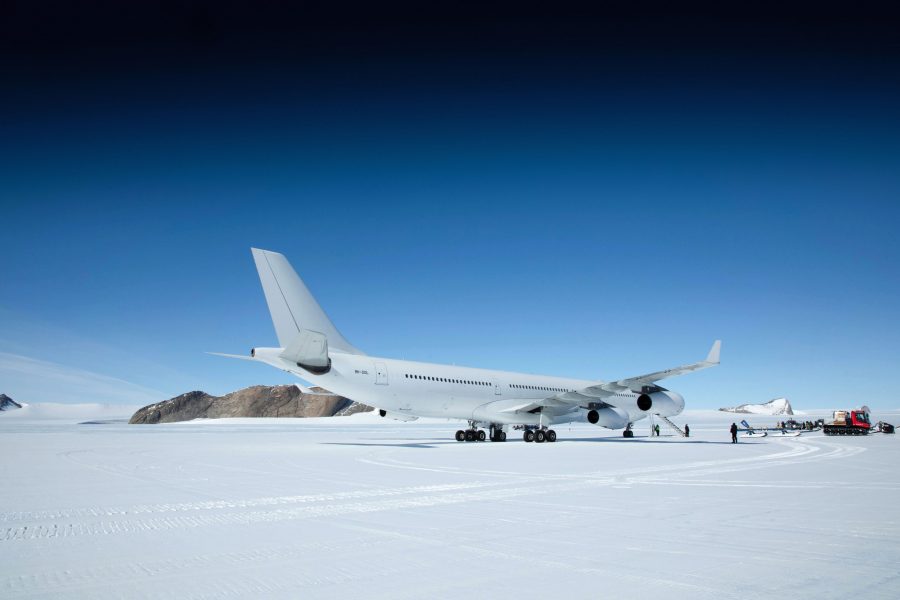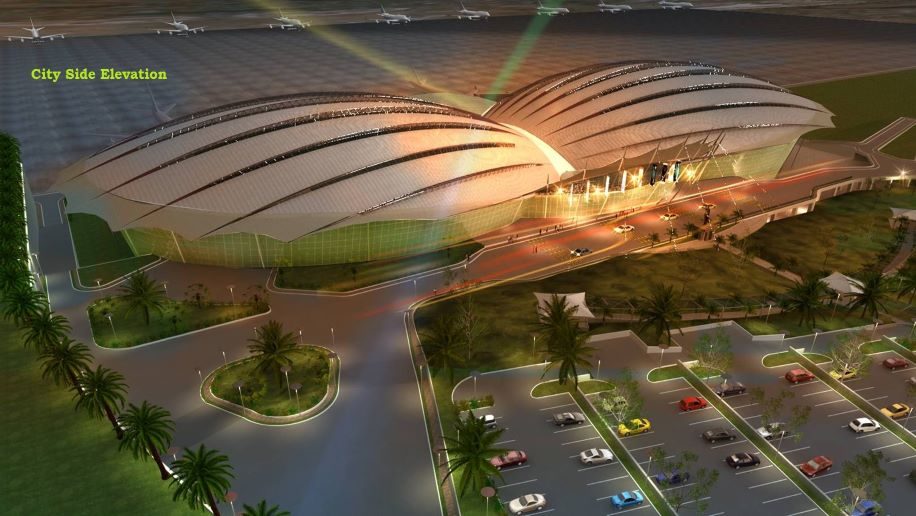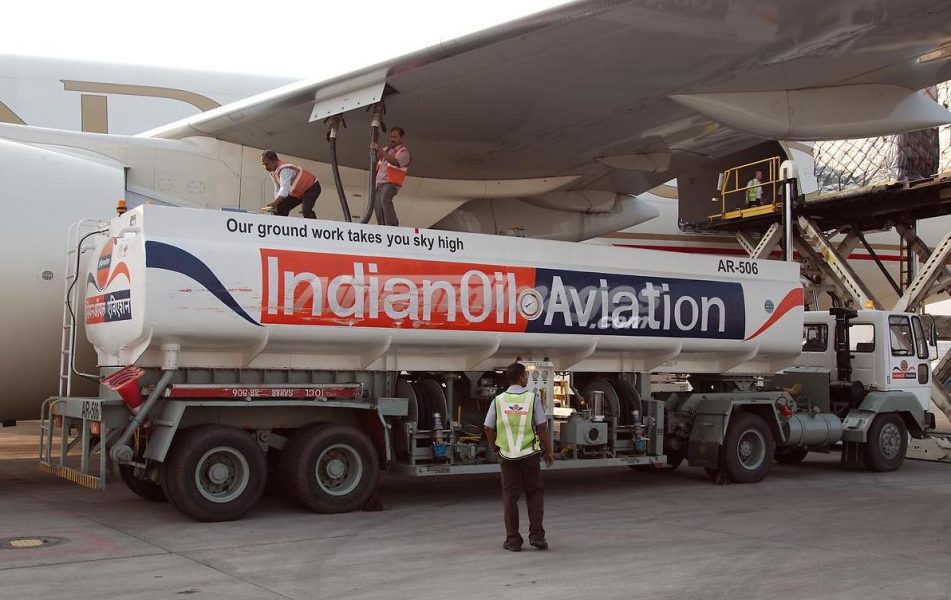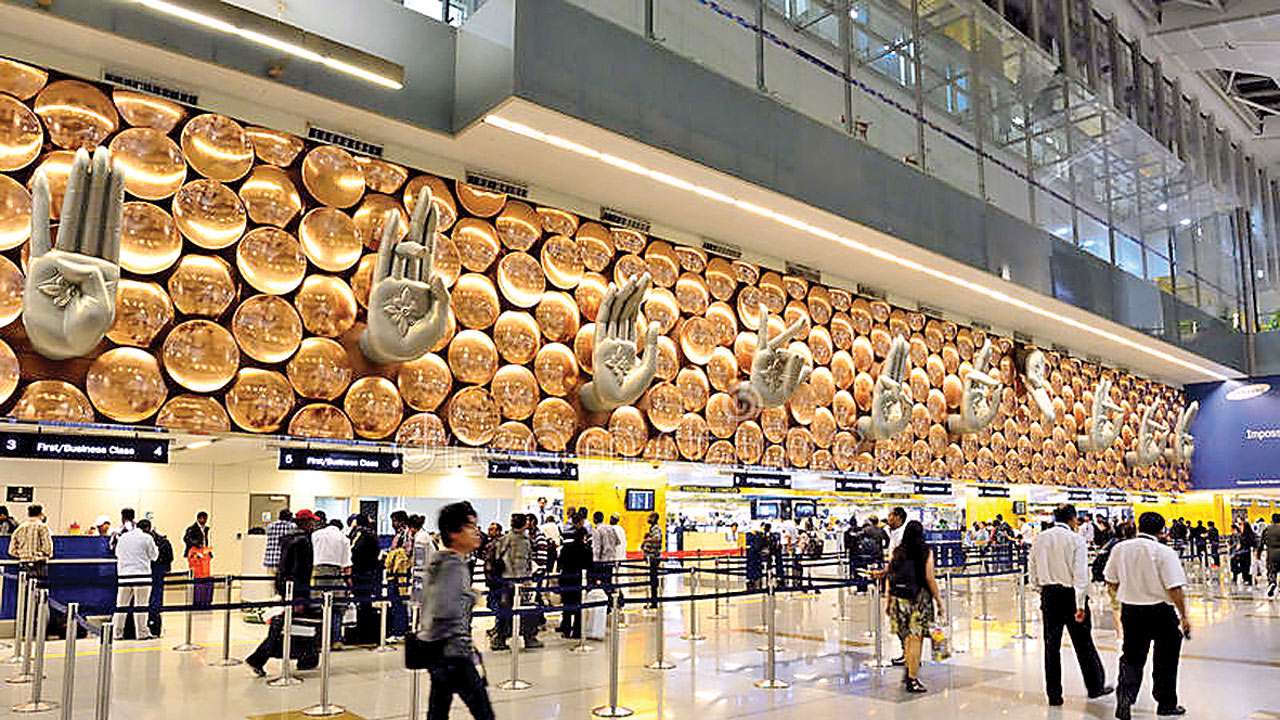The pandemic has flipped the pecking order of world airports. This month Delhi Airport is busier than Dubai International Airport (DXB) in terms of combined domestic and international seat capacity deployed by airlines.
At 30.87 lakh, Indira Gandhi International Airport (IGIA) is the seventh busiest airport globally in November, slightly ahead of DXB at 30.72 lakh, according to UK-based air consultancy firm OAG.
In pre-pandemic November 2019, DXB was at number 3 and IGIA at number 10 on this criteria.
While Dubai (DXB) remains the world’s busiest international airport by seats, IGIA does not figure in the list of top 10 international airports due to continued restrictions on scheduled foreign flights by India.
The revival of domestic air travel in India — where airlines are now allowed to fly as many flights within the country as they did pre-Covid — has led to a revival of footfalls at airports, making IGIA overtake DXB in overall domestic plus international seat capacity.
In pre-pandemic times, nearly 60% of the international traffic between India and the rest of the world flew foreign airlines. Of them, Gulf carriers took the lion's share in terms of both points to point and connecting traffic.
Dubai International Airport (DXB) Image Courtesy - (ifly A380 - Airbus)
"If India can take steps to lower the steep operating cost structures for its airlines and the latter can mount more nonstops to the rest of the world, including distant continents, then the blow to airlines of nearby hubs will be big. Transit traffic to and from India is a big source of filling the planes of these airlines," said an airline official.
The 10 busiest airports overall (domestic plus international seat capacity) in November, according to OAG, are - Atlanta Hartsfield-Jackson, Dallas Fort Worth, Chicago O’Hare, Guangzhou, Denver, Los Angeles International, Delhi IGIA, Dubai DXB, Tokyo Haneda and Shenzhen.
The 10 busiest airports by international seat capacity alone this month are - Dubai DXB, London Heathrow, Amsterdam, Paris CDG, Frankfurt, Istanbul, Doha, Madrid Adolfo Suarez-Barajas, New York JFK and Dublin.
“This month again, half of the top 10 global airports, by seat capacity, are located in the US. Atlanta (ATL) remains in the first place, and Chicago O’Hare (ORD) drops from second to third place… Dubai (DXB) retains its position as the busiest international airport this month, whilst London Heathrow (LHR) climbs up the rankings into second-place from fourth-place last month. Amsterdam (AMS) moves down to the third place. Eight European airports remain in the Top 10 Busiest International Airports this month with Dublin (DUB) replacing Antalya (AYT) and moving into tenth-place. New York’s JFK airport also returns, coming into ninth place. Only half of the current Top 10 airports were in the Top 10 in November 2019. Still missing are Singapore (23), Hong Kong (27), Incheon (45) and Bangkok (63) as recovery in Asia continues to falter.”OAG
(With Inputs from The Times of India)
Read next
Airbus A340 makes its first-ever landing on the ice-capped runway in Antarctica
Prashant-prabhakar
26 Nov 2021

In what can be termed as a "first" in the annals of aviation, an Airbus A340 successfully landed on the "white" continent, on a runway made out of ice.
The A340 took off from Cape Town International Airport in South Africa and landed on Antarctica’s Wolf’s Fang Runway-an an airstrip made from blue glacial ice.
Republic World
The flight, Hi Fly 801 departed from Cape Town in South Africa, flew for 5 hours and landed in Antarctica on the same day, having covered 2500 nautical miles.
The 2500 nm between CPT and WFR would take us 5h10m on the way down, and 5h20m on the return. As this was the very first flight, with limited support on the ground, we planned for a 3h turnaround time in WFRCaptain Carlos Mirpuri
The captain's log, which was released alongside Hi FLY's press release, further mentioned that the A340, registered as 9H-SOL, had a maximum take-off weight of 275 tons and carried 77 tons of fuel.
Carrying fuel to cover both ways means we would be landing at a maximum landing weight of 190 tons. Add the fact that we are operating to an airfield carved out of blue glacial ice and one easily understands that the first ever Airbus A340 landing there attracted a lot of attention and anxiety. But we at the front office were confident that we had done our homework properlyThe captain mentioned in the log
Landing on ice has its inherent challenges and hence Hi FLY had been preparing for this flight two months before the main event.
A blue glacial ice runway is hard. It can stand a heavy airplane on it. Its depth is 1,4 kms of hard air free ice. The next important thing is that the cooler it is the better. Grooving is carved along the runway by special equipment, and after cleaning and carving we get an adequate braking coefficient; the runway being 3000 meters long, landing and stopping an A340 that heavy of that airfield wouldn’t be a problem. At least not on paper, as never an A340 landed before in blue glacial iceCaptain Carlos Mirpuri
Apparently, the ice runway at Wolf Fang's property in Antarctica, though not a designated airport, is technically a level C airport and only highly trained crew could land into those challenging conditions the region has to offer.
The altimeters in cold weather also suffer from temperature errors, and need adjustments. All this was accounted for. We flew a textbook approach to an uneventful landing, and aircraft performed exactly as planned. When we reached taxi speed I could hear a round of applause from the cabin. We were joyful. After all, we were writing historyCaptain Carlos Mirpuri
https://www.youtube.com/watch?v=X1jmjgktFQo
WONDER WORLD | YOUTUBE
Wolf Fang is a high-end adventure camp based in Antarctica. The flight was operated by Hi FLY, which is a widebody aircraft wet-lease operator. Although the flight landed on November 2, details hadn't been available in the public domain, until now.
COVER: Business Insider
Read next
Port Blair airport to have a new INR 700 Crore terminal building by October 2022
Radhika Bansal
20 May 2022

Port Blair airport, also known as Veer Savarkar International Airport is soon going to have a new terminal building.
Considering the surge in passenger traffic, the Airports Authority of India (AAI) has undertaken the work for the construction of a new integrated terminal building at an estimated cost of around INR 707.73 crore.
With a total built-up area of 40,837 sq metres., the new terminal building will be capable to handle 1200 passengers during peak hours and about 40 lakhs passengers annually. The new passenger terminal building will have three floors comprising lower ground, upper ground and first floor.
https://twitter.com/PIB_India/status/1527269772647604225
The lower ground floor will be used as remote arrival, bus lounge and service area, the upper ground floor as access to the terminal building for departure and arrival of the passengers and the first floor as a Security Hold Area (SHA) for international passengers.
Inspired by nature, the design of the terminal is a shell-shaped structure depicting the sea and islands. New Terminal Building is a Large Span (120 Mtr) structural steel framed building provided with aluminium sheet roofing and cable net glazing all around.
The entire terminal will also have 100% natural lighting for 12 hours a day which will be achieved by skylights along the roof. The world-class building will be equipped with 28 check-in counters, three passenger boarding bridges and four conveyor belts.
Port Blair airport to have a new INR 700 Crore terminal building by October 2022
The Cityside area of the airport will also be developed with adequate parking facilities for cars, taxis and buses along with the landscaping. The work for the construction of an additional apron area is also in progress which will add four additional bays for the parking of the aircraft.
More than 80% of the project work is completed and the development project is targeted to be completed by October 2022. The operationalisation of the new terminal building will boost the tourism industry and improve the economy of the region.
ALSO READ - New passenger terminal of Andaman Airport likely to be ready by June 2022
Originally known as "Port Blair Airport", it was renamed in 2002 after the Vinayak Damodar Savarkar who had been detained in the Cellular Jail in the city for 10 years.
The increased connectivity will not only create new employment opportunities for the local community but also provide access to better educational and medical facilities.
Veer Savarkar International Airport, also known as Port Blair Airport is an international airport located 2 km south of Port Blair and is the main airport of the Andaman and Nicobar Islands of India.
Originally known as "Port Blair Airport", it was renamed in 2002 after the Vinayak Damodar Savarkar who had been detained in the Cellular Jail in the city for 10 years. It operates as a civil enclave, sharing airside facilities with INS Utkrosh of the Indian Navy.
Read next
Assam government has approved a proposal to grant partial exemption on the sale of ATF
Radhika Bansal
25 Nov 2021

Assam government has approved the proposal to grant partial exemption by way of payment of VAT at the rate of 1% on the sale of Aviation Turbine Fuel (ATF) made to aircraft operating under the Regional Connectivity Scheme (RCS).
Presently the VAT on ATF is 23.5%. The state cabinet meeting on Wednesday, November 24 decided this partial exemption shall also apply to such aircraft even when they provide air services to NON-Regional Connectivity Scheme (RCS) airports/airstrips.
The State Cabinet decided to rationalise and restructure the Advalorem levy to increase the total excise revenue collection. Advalorem levy constitutes about 95% of the total Excise revenue collection.
The state government has stated, “This move is in the light of fact that the rates of Ad-valorem levy in Assam in respect of the brand(s) being quite low compared to most of the states except for Arunachal Pradesh." Such revisions will lead to growth in revenue resulting from up-gradation of consumer preference, growth in the volume of sales and enhanced Ad-valorem levy rates.
Additionally, there would be consequential growth in annual VAT collection also. The amendments will come into force on the 10th of December 2021.
Recently Tripura and Madhya Pradesh governments have decided to reduce the share of Value-Added Tax (VAT) levied on Aviation Turbine Fuel from 16% to 1% and from 25% to 4% respectively.
In August, to give impetus to air travel, Union Minister for Civil Aviation, Jyotiraditya Scindia has written a letter to 22 States/ UTs urging them to rationalize VAT on ATF across all airports in States within the range of 1% to 4%. He has asked them to take forward common intention to boost air travel and connectivity in State to accelerate its economic development.
Read next
IndiGo said on Wednesday, November 24 it will resume Chennai-Singapore flight under-vaccinated travel lane (VTL) from November 29 onwards.
Air travel to Singapore is currently happening on VTL and non-VTL. VTL allows quarantine-free travel to Singapore for fully vaccinated travellers.
Civil Aviation Authority of Singapore (CAAS) had on Sunday, November 21 announced that Singapore and India have reached an agreement to resume commercial passenger flights between the two countries from November 29.
IndiGo said in a press release that it will operate a daily flight on the Chennai-Singapore route from November 29 onward.
"Following incorporation of air bubble between India and Singapore, IndiGo has been allocated a total of 3,618 seats per week, of which 1,624 seats will be operated on the ChennaiSingapore route under VTL," the airline said.
The rest of the capacity will be utilised under non-VTL conditions for travel to and from Singapore, it added.
“As we eventually come out of the pandemic, we are happy to resume flights to Singapore under the air bubble agreement. International connectivity under air bubble arrangement has been helpful in slowly bringing back the international travel demand. The situation is improving rapidly, and we are hopeful that this will further help citizens of India and Singapore to travel with ease for various purposes."Ronojoy Dutta, CEO, IndiGo
Travellers on a VTL flight entering Singapore will be required two COVID-19 tests -- one within two days of flight departure and one on-arrival test at the Singapore airport. The VTL passengers would not undergo any quarantine.
Read next
Airport infrastructure sector is expected to turn around this fiscal year with an operating profit of INR 3,200 crore
Radhika Bansal
25 Nov 2021

After reporting an operating loss in 2020, the airport infrastructure sector in the country is expected to turn around this year with an operating profit of INR 3,200 crore, driven by a likely 82-84% growth year-on-year in air passenger traffic during the period, according to a report by rating agency ICRA.
The agency also said that due to the COVID-19 pandemic, the ongoing capacity expansion plans at the major airports are expected to be delayed by 12-18 months.
"The airport infrastructure industry was one of the worst-hit sectors due to the COVID-19 pandemic.The sector's operating income and operating profits are estimated at INR 14,000 crore and INR 3,250 crore (operating loss of INR 1,450 crore in FY2021), respectively, in FY2022.However, the outlook on the airport infrastructure continues to remain negative.With the improvement in the operating margins and the consequent cash flows in FY2022, the interest coverage and debt service coverage ratio (DSCR) are expected to improve to 1.8x and 1.2x, respectively.The strong on the balance sheet liquidity is expected to support the sector in the near term."Rajeshwar Burla, Group Head (Corporate Ratings), ICRA.
The significant ramp-up in vaccination, decline in COVID-19 cases and a pick-up in revenge leisure travel are supporting the growth in the domestic passenger traffic, it stated in a statement.
According to ICRA, domestic passenger traffic has increased consecutively for five months after the slowdown witnessed in April and May this year due to the second wave of the pandemic.
The easing of COVID-19 restrictions by state governments, dip in new coronavirus infections, healthy pace of vaccination and a pick-up in leisure travel has resulted in a sequential domestic passenger traffic growth during the June-October period, with the same reaching 17.3 million in October 2021 (the highest since the start of the pandemic in March 2020), it said.
This is further supported by the recent decision of the civil aviation ministry allowing 100% domestic capacity of pre-COVID-19 levels with effect from October 18, it added.
ICRA said it expects domestic air travel to recover back to pre-COVID-19 levels by FY2023 and the international sector by FY2024.
"As per ICRA's base case scenario, the passenger traffic growth is now estimated at 82-84% y-o-y in FY2022, against the earlier projection of 71-73% y-o-y. This is factoring in the assumption that the impact of the third wave (if any) to be low due to mass vaccination," Burla said.
In the recently released tariff orders for some of the major private airports, the Airports Economic Regulatory Authority (AERA) has acknowledged the adverse impact of the COVID-19 pandemic on the airport operators, according to ICRA.
The true-up of traffic for FY2021 has been considered in the current control period. Further, considering the impact of a second wave of the pandemic on air traffic in Q1 FY2022, the regulator has decided not to increase the tariff for FY2022, as the sector is in the recovery phase and an increase in tariffs had made with effect from April 1, 2022, ICRA said.
However, given the low traffic on one side and ongoing/upcoming capacity expansion plans at major private airports, on the other side, the decision to continue with the same tariff for FY2022 is expected to impact the airport operators temporarily.
ICRA notes that due to the COVID-19 pandemic, the ongoing capacity expansion plans at the major airports are expected to be delayed by 12-18 months. The completion cost is expected to increase due to an increase in interest during construction (IDC) as some of the airports have funded CAPEX with bullet bonds that have been drawn down at once, it said.
The ramp-up in domestic passenger traffic has been steady since the second wave of the pandemic. However, the ban on international commercial operations since March 2020 and the rise in coronavirus infections again in Europe and other international regions is expected to delay the recovery of international traffic, it said.
The rating agency added that the same is expected to recover back to pre-COVID-19 levels by 2023-24.



Comment